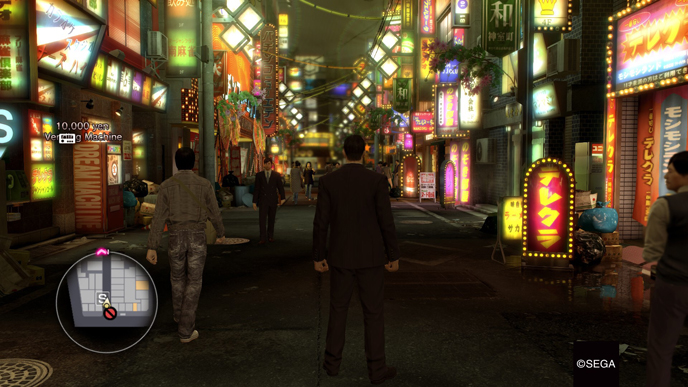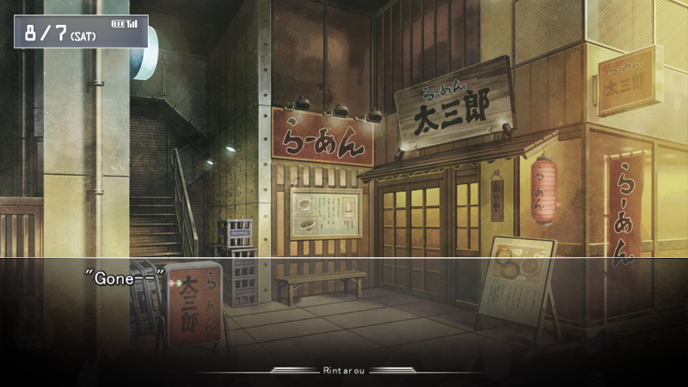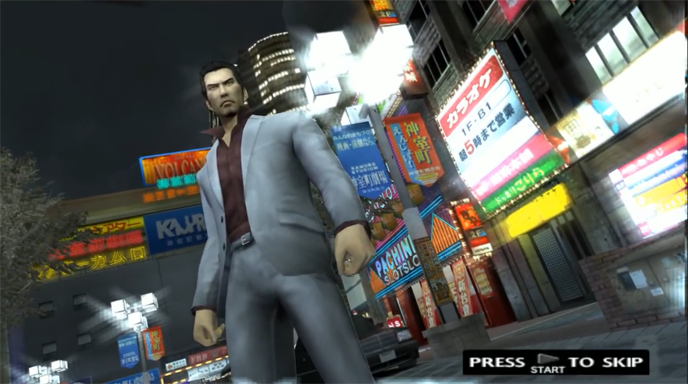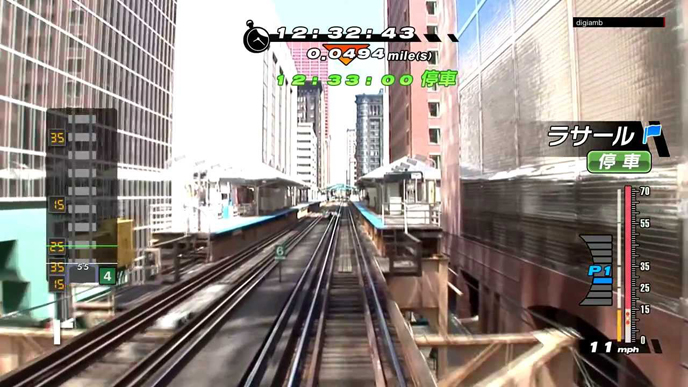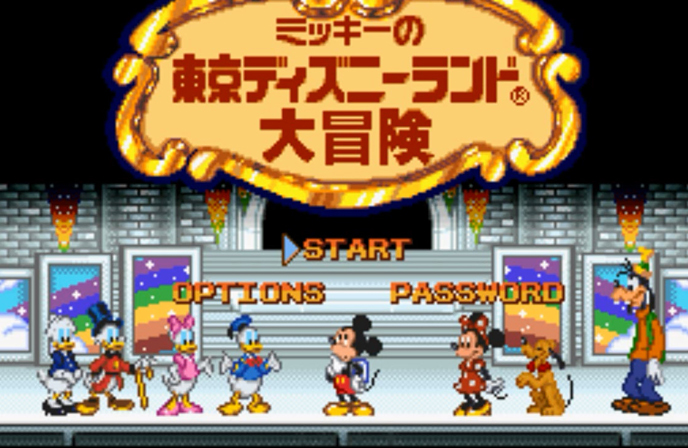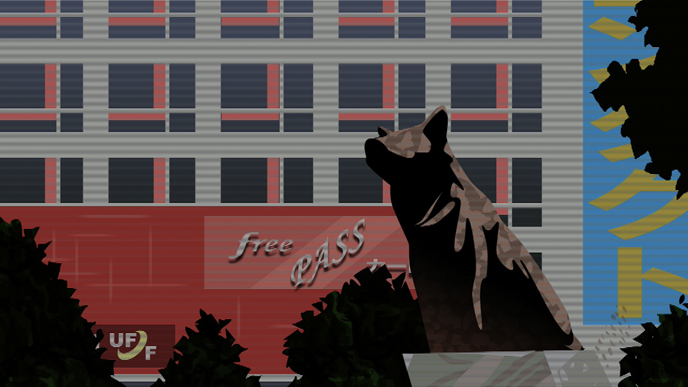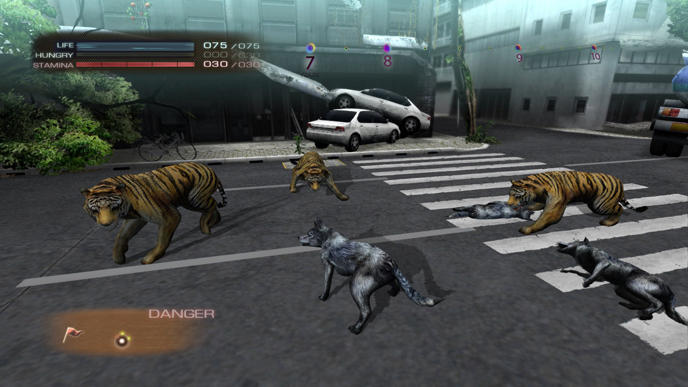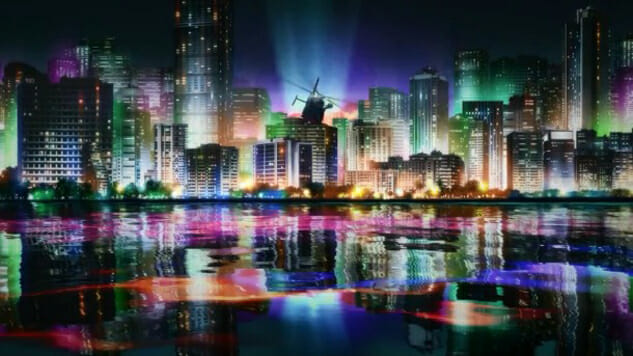
If you’re like me, hopping on a plane to Japan sounds nice, but doesn’t always gel with your schedule or travel budget. But, hey, don’t sweat it. Part of the appeal of playing videogames like Persona 5 is their ability to whisk you off to distant places without all the wallet strain and jetlag. Fortunately for us would-be expats, Japanese game studios take excessive pride in reproducing their homeland in videogame form. Already, they have carved out much of the country’s most sought-after landscapes and real estate. And while the games on this list won’t replace the real-life experience of getting lost on the Ginza Line, they come closer to replicating Japan than anything else.
Persona 5
By night, the hero of Persona 5 slashes through surreal dungeons with a cartoon cat sidekick. But the rest of his time is spent navigating between classes and a fully realized version of Tokyo. When creating the game, Katsura Hashino scoured the Sangenjaya district in search of quaint little back alleys and soba shops to use in the story. Likewise, whenever the development team came down with a case of writer’s block, they left their desks and wandered around the city, much like the game’s hero. As a result, the game shines at simulating the aimless routines of restless youth: applying for part-time jobs but not showing up, loitering in the Ginza Line subway station, renting DVDs and forgetting to return them.
Yakuza 0
Yakuza 0 is set in Kabukicho, a bone fide red-light district found in Tokyo. You might recognize it as the same place where Gaspar Noe filmed Enter the Void. As these articles of entertainment teach us, the district is abuzz with neon lights, tiny piano bars, and places that are reserved exclusively for men who break people’s fingers. From organized crime bosses to small time DMT hustlers, all kinds of bad people go there to have a good time. Yakuza 0 goes to great lengths to duplicate the city’s wild side, even including the notorious hostess clubs, which TripAdvisor tells me are plentiful in the area. While the hostess mini-games have attracted some eye-rolling and disdain, they make virtual Tokyo all the more legitimately slimy.
Tokyo Mirage Sessions #FE
Tokyo Mirage Sessions #FE puts a sugar-coating on Tokyo; everyone is either in a J-pop group or dresses like it. Needless to say, its depictions of the city lack the realism of other games on this list. The locations in the game, like the uncannily hip department store Shibuya 109, don’t exactly align with real-world maps. At first, the game’s developers set out to include the entire neighborhood of Shibuya, but they found traversing the area exhausting. But it’s the thought that counts, and the game nails the scene’s good vibes with idol fashion and plenty of “wotagei” dance moves and cheers.
Persona 4
While Persona 5 bustles with the sounds of commuters and foot traffic, its predecessor Persona 4 captures the tranquil side of Japanese life. Set in an anonymous small town, somewhere along the foothills of Mount Fuji, the game transports the player to a rural whistle-stop, “a run-of-the-mill town, a nowhere place you’d just pass right through,” in the words of the game’s artist Shigenori Soejima. Despite claims that the location doesn’t actually exist, fans have searching Japan for the real place, and it seems they’ve found it. Apparently, the studio lifted many of the game’s buildings, including the department store where the young hero gets sucked into the television set, from a small community in Yamanashi Prefecture. As for the TV World, no proof that it exists has been found . . . yet.
Steins;Gate
Akihabara is known as an electronics mecca and otaku haven, making it an ideal setting for a visual novel about hacking and time travel. Steins;Gate weaves its strange technological tale throughout the region, although players in the West might not recognize how literal the connections are. From the maid cafe, to the coin lockers, to the beef bowl restaurant where the protagonist has lunch, the designer Chiyomaru Shikura has assigned many places in the story precise geo-locations IRL. In fact, a kind soul has plotted out many of the in-game locations in Google Maps.
Yakuza 2
Yakuza 2 is remarkable for venturing out into other parts of Japan outside of Tokyo. Much of the story happens in Osaka, which is nearly identical to Tokyo, except that the people there speak with a country accent, at least according to this game. Some guy on GameFaqs described Osaka as the Japanese Atlanta, which, as a person who lives near Atlanta, I’ll take as a compliment. The images of Osaka are a little grainy and blurry, because the game came out before the high-definition epoch, but exploring the Hot’Lanta of the East is still worth dusting off the component cables for.
Shin Megami Tensei: Devil Summoner 2: Raidou Kuzunoha vs. King Abaddon
Arriving at the tail end of the PlayStation 2’s life cycle, Devil Summoner 2 came out too late for many to experience it, which is a shame, because it was one of a kind. Something of period piece, the game looks at the brief window of time between the two world wars when Japan was starting to come under the influence Western culture. The transition manifests in the game’s strange version of Tokyo, which seems to exist somewhere outside of time. The protagonist, a cape-wearing detective with a talking cat, catches cable cars from the quickly modernizing city to ancient Shinto shrines. There is a contrast between the old and the new, with a lot of Persona-style demon-hunting to relieve the tension.
Railfan: Chicago Transit Authority Brown Line
Railfan could be the simplest game to ever roll its steel wheels onto a home console, but that’s kind of the beauty of it. Now hear me out. From a purely mechanical standpoint, train games admittedly suck. Usually the games consist mostly of speeding up your train…and then slowing them to a complete stop. But to criticize this misses the point. Like Godzilla games, train simulators are about seeing Japan from the perspective of a giant beast. Despite having the word Chicago in the subtitle, the game features two Japanese railways, one that pings all over Tokyo, and another that runs through the country, from Osaka to Kyoto, letting passengers get on and off at every single station.
Eh, it’s a tough sell, but did I mention that it’s a full-motion videogame? Anyone? Hello?
Mickey no Tokyo Disneyland Daiboken
Many games have featured Walt Disney’s creations over the years, but only one of them takes inspiration from Tokyo Disneyland. Even though Mickey no Tokyo Disneyland Daiboken is a classic 16-bit side-scroller, the game remains faithful to its source material, using a fairly legitimate facsimile of the theme park’s layout for the in-game map. The iconic cartoon mouse skips and hops through several major theme park rides, including a precarious ride on Space Mountain’s shuttle. Anti-climatically, the attractions are the same ones Westerners know by heart (Cinderella’s Castle, Thunder Mountain, the Haunted House), only shuffled around a bit.
The World Ends With You
At some point in their lives, everyone dog lover has teared up over the story of Hachiko, the purebred Akita who searched for his dead owner at Shibuya Station every day for ten years, and who is now immortalized in a bronze statue outside the station. Square Enix saw fit to put this iconic statue in The World Ends With You, along with numerous other nods and references to the Shibuya neighborhood. Yep, TWEWY is yet another “Shibuya” game, which, by my unscientific count, makes it the most digitally reproduced region on Earth. Still, the software gives the region more due diligence than most. Not only does the playfield include the famous Shibuya Crossing, known as the world’s busiest pedestrian intersection, it also covers the nearby Starbucks (renamed as Outback Cafe), where onlookers gather to watch as many as a thousand people queue up to cross the street at the same time.
Tokyo Jungle
For a game that’s basically Lord of the Flies with cats and dogs and zebras, Tokyo Jungle’s geography is strangely correct. Like so many games that take place in Tokyo, some vicious creatures have taken over Shibuya, the street fashion capitol of Japan. In this case, some of the waypoints have been twisted around. Jingu Bashi, the bridge where people in weird clothing hang out, lies to the north of Yoyogi Park, instead of to the south. That said, the game world has kept Shibuya Station and the surrounding suburbs more or less intact. I imagine anyone who has played the game for long could find their way around should an animal invasion break out.
Jason Johnson always refers to himself in the third person. Find his words on Intel iQ, PBS Game Show, and Longreads.

